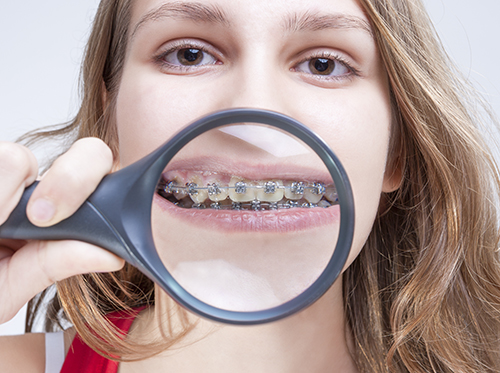Make Your Braces Bands Work for You!
September 18th, 2018

Well, of course, they already are working for you—as an essential part of the alignment process. Rubber bands, also known as elastic ligatures, are used to secure the wires inside your brackets. But bands can be more than functional. Since the ligatures around each bracket are replaced when you visit our office, why not use that opportunity to choose a new color scheme as well?
- Make a Statement
Bands offer a chance to coordinate your braces to an interest, team, or event. Are you a swimmer? Maybe cool blues and turquoises appeal to you. Batman forever? Black and yellow. (That will work for beekeepers, too.) Have a favorite sports team? Choosing team colors will support your team with every smile. Love your school? Show your spirit by wearing bands in your school colors. Favorite time of year? Celebrate by selecting festive bands in holiday colors.
- Suit Your Mood
Fiery reds and oranges, tranquil blues and greens, millennial purples and pinks, or exuberant neon—you know that there are just some colors that suit your personality. Showcase that personality with your choice of band color. And if your mood changes, choose shades that express a completely different side of you.
- Coordinate Your Colors
Match your bands to your eye color, your makeup, or the clothing colors you choose most often. If there’s a color profile that works for you, make your bands a part of it. If you don’t want everything matching, complement your coloring or clothing with a different but coordinating shade for a cohesive effect.
- Keep a Low Profile
Most adults will stick with a monochromatic set of bands, and this might be a look that appeals to you as well. Grey and silver bands will blend nicely with silver braces. If you have clear or white brackets, you might want to test out which bands will be least noticeable. Clear bands can become discolored, and white bands can make teeth look darker. If there’s a band which mimics your own tooth color, this will be the choice for you.
- Make Color Theory Work for You
Certain colors and tints bring out the best in your tooth color and work with your skin tones. White and yellow bands might make teeth appear duller, and any shade combination that resembles food particles (greens, browns, and black) is probably not a look you’re going for. Have fun with a color wheel and decide which colors you find most flattering.
Make your bands more than a tool—make them an accessory. There are so many colorful options available that you are bound to happen on a color scheme that just suits you. And if you change your mind? Change it up during your next visit to our Chicago, IL office!




 Website Powered by Sesame 24-7™
Website Powered by Sesame 24-7™